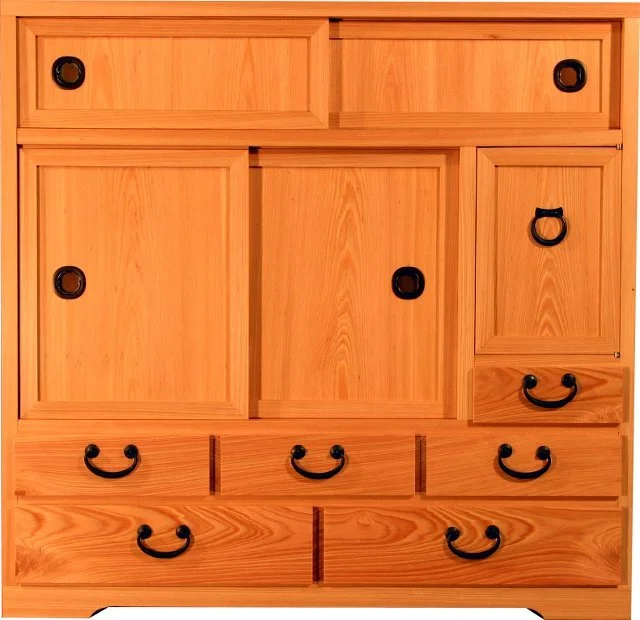2008
JAnuary
Visitors to this website wouldn't know it, but in addition to building boats and writing about boats, I also building traditional Japanese furniture and interiors. The term tansu encompasses a wide variety of Japanese storage furniture, and I have also built shoji screens and even a wooden bathtub. I was asked to build this piece for an exhbit that opened at the Bard Graduate Center in New York City.
The piece is a replica of a Meiji era (1868-1912) Japanese chest designed for storing tea and the implements used in tea ceremony. The wood is southern cypress (similar to Japanese hinoki) and the hardware is from Japan. The case joinery is called hanken shiki, or what in the West is called finger joinery. The use of a five-part joint at the corners is called go mai gumi tsugi. These joints are further reinforced in the traditional manner with bamboo nails.
The sliding doors run in wooden tracks like shoji screens, and behind the large doors are asymmetrical shelves known as chigai dana. The hinged door swings on brass knife hinges and latches with a bullet catch, which are not traditional.
The simplicity and asymmetry of this cabinet are typical of Japanese tansu. It could be argued that these two values, which are so prevalent in Japanese furniture, exemplify the twin influences of Shintoism and Buddhism on Japanese arts, aesthetics and culture. The randomness of the design reflects the Shinto obsession with nature and its lack of order. The lack of balance and symmetry creates a question, inviting the viewer to engage with the piece at a deeper level. In the Buddhist view, the beauty of the piece lies in the viewers' process of imagination, reflection and discovery.
